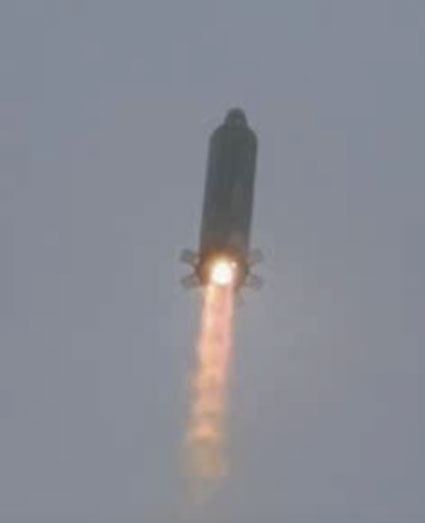North Korea launched two Musudan intermediate-range ballistic missiles from its east coast early Wednesday morning, the South Korean Joint Chiefs of Staff (JCS) said. Both launches were successful. The first test terminated after a short flight but in the second attempt, the missile ascended in a steep trajectory that managed to reach apogee at an altitude of 1,000 km and impacted at sea, about 400 km from its launch point. Both flights represent a significant improvement over previous attempts, where the missile failed seconds after liftoff.
“The North launched one missile presumed to be Musudan from areas near Wonsan at around 5:58 a.m., but it is assumed to be unsuccessful,” the JCS said in a brief release. The missile was launched successfully, but disintegrated mid-air after a flight of about 150 km (95 miles). A follow-on launch of another missile took place about two hours later; on this test, the missile succeeded to ascend to an altitude of 1,000 km (620 miles) Japanese Defence Minister Gen Nakatani said, indicating North Korea had made progress. That missile plunged into the Sea of Japan, about 400 km (250 miles) from its launch point. “We don’t know whether it counts as a success, but North Korea has shown some capability with IRBMs (intermediate range ballistic missiles),” Nakatani told reporters in Tokyo.


According to western analysts, the flight parameters of the recent test indicate that the flight profile used for the second flight was intentionally short and steep, thus challenging the missile to consume the entire propellant in its fuel tank within the international water surrounding the Korean peninsula. Using such trajectory the Koreans could test the missile and its propulsion system to its limit, including reentry and high-speed endo-atmospheric flight, within the relatively short distance.
״North Korea’s latest Musudan (Hwasong-10) missile test finally demonstrated the full performance of the missile’s propulsion system, and at least a minimally functional guidance system. The trajectory was not representative of an operational launch, and so leaves open questions about the performance of the reentry vehicle. Perhaps more importantly, two launches only a few hours apart and with one missile breaking up in flight, gives the North Koreans little chance of understanding what went wrong. The Musudan is not a reliable weapon, and Pyongyang does not seem to be trying to make it a reliable weapon. But even if this is just a propaganda stunt and the Musudan is to be quietly abandoned, this partial success increases the likelihood that North Korea’s KN-08 and KN-14 road-mobile inter-continental ballistic missiles (ICBMs) will reach operational status early in the next decade.״ John Schilling at the 38north.org website stated.
The Musudan has an estimated range of anywhere between 2,500 and 4,000 kilometres (1,550 to 2,500 miles). On its latest test flight the missile was launched at an estimated angle of 78-80 degrees, compared to 45 degrees which would yield the maximum range. The lower range covers the whole of South Korea and Japan, while the upper range would include US military bases on Guam.
So far, North Korea has attempted to test-fire the Musudan missile four times – first on April 15, two more on April 28 and the latest on May 31 this year – but all ended in failure, with the missile exploding in midair shortly after launch or on a mobile launcher or crashing seconds after launch.
The U.N. Security Council condemned the launches as violations of Council resolutions.




















